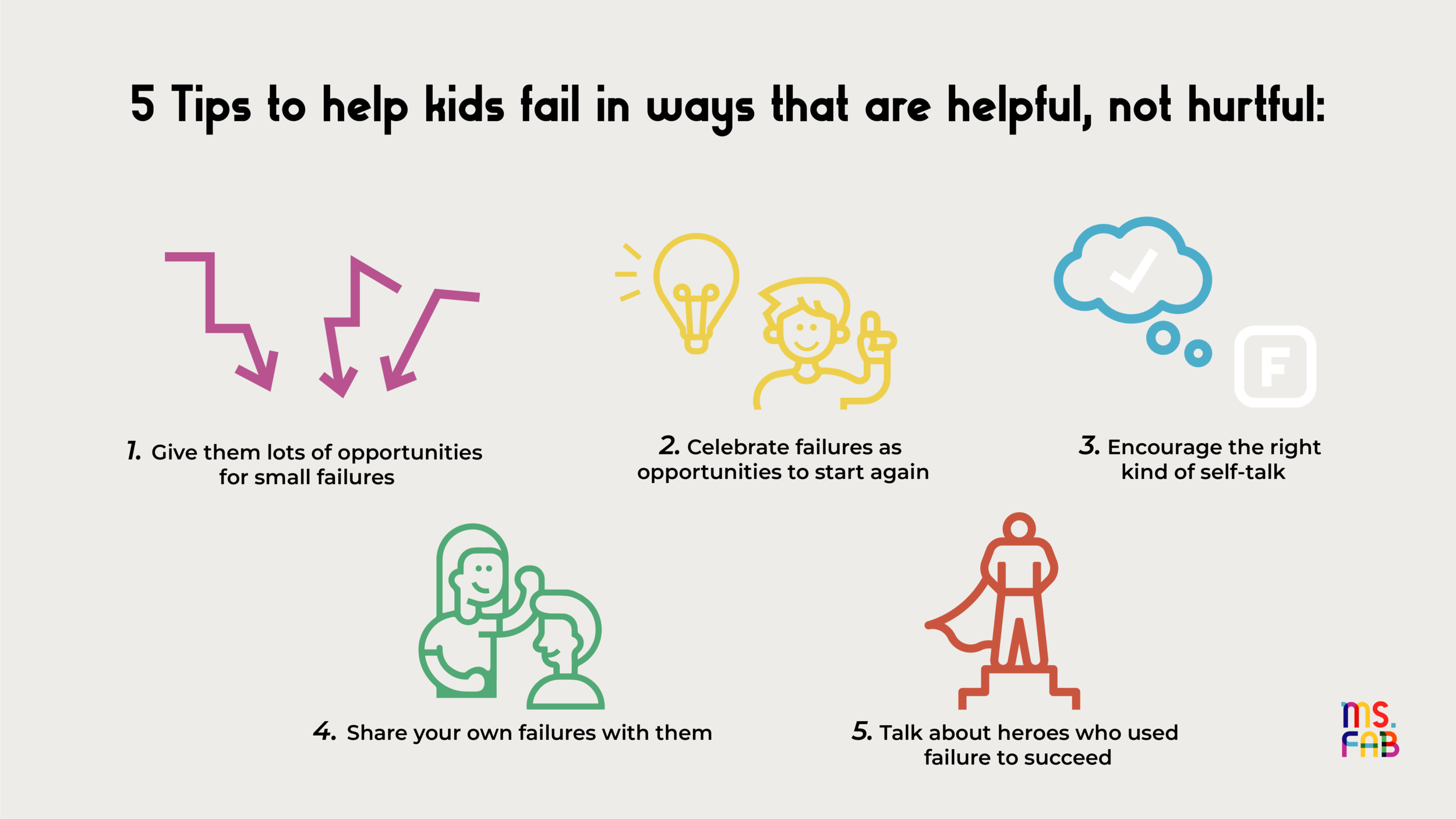The Art of Failure
We grow up with a fear of failure instilled by school.
Red ink, capital Fs, stern talks after class, and bad report cards.
As John Holt explains in his book, How Children Fail, the school system was designed to make kids scared of failing.
We have it all backwards.
Failure should be something we encourage, not punish. Our society needs failure to fuel discovery and progress. We have to try many different things that don’t work before we can find the things that do.
Consider the history of science.
At first glance, it looks like an unbroken string of success after success, but that’s not the case. It’s actually about people embracing failure and learning from mistakes. (Read more here.)
If failure feels frightening or foreign, then kids will never venture out. But if it feels like an old friend, they’ll be comfortable trying crazy new ideas.
Of course, not all failure helps kids.
We don’t want our kids to fail to find work, meaning, or happiness in life, for example. That’s catastrophic failure—and we should help them avoid it at all costs. The best way to avoid catastrophic failure as an adult is to make lots of small failures as a kid.
As Stuart Firestein says, “We must make and defend a space for non catastrophic failure.”
It’s from small failures that we learn to avoid mistakes with life-altering consequences.
So, how can we help kids fail in ways that are helpful, not hurtful?
1. Give them lots of opportunities for small failures
Video games are fantastic for this because they reframe the learning process in such a way that kids don’t concern themselves with failure.
When small mistakes are not penalized, kids feel motivation to pick themselves up, stick with a task, and keep learning.
2. Celebrate failures as opportunities to start again
Frame failure as an exciting quest for feedback:
“What did you learn?!”
“What are you going to try differently next time?”
“Are you ready to try again, this time with more information?”
3. Encourage the right kind of self-talk
When things go wrong, how do they describe the situation?
Watch out for statements like: “This is all my fault. It’s going to last forever and ruin everything. There’s nothing I can do about it.”
This pattern can lead to learned helplessness.
Try reframing the situation: “This won’t last for long. Besides, some parts did work! Don’t be so hard on yourself. What do you think you could do to help things go better in the future?”
4. Share your own failures with them
Set a positive example by opening up about your own failures and how you handle them.
Talk about how you picked yourself up, persevered through difficulty, and learned from your mistakes.
Kids learn a lot about how to handle failure by watching adults.
(Check out the research on this here.)
5. Talk about heroes who used failure to succeed
Think about the heroes or role models your kids look up to. Make sure they acknowledge the struggles as much as the successes.
Pay attention to the books your kids are reading. Do the main characters always easily win the day?
Find stories where the heroes face extreme adversity, stumble, pick themselves up, and achieve success with what they learned from failure.
No progress is possible without trial and error. Not in business, not in science, not in nature. Without failure, there is no learning, no progress, and no success.— Naval Ravikant
With a positive perspective on failure, we can help our kids develop true confidence to build a better future for all of us.
I explore ideas like this in Fab Fridays, my newsletter on childhood education with a twist + new ways to learn.
Subscribe below!



